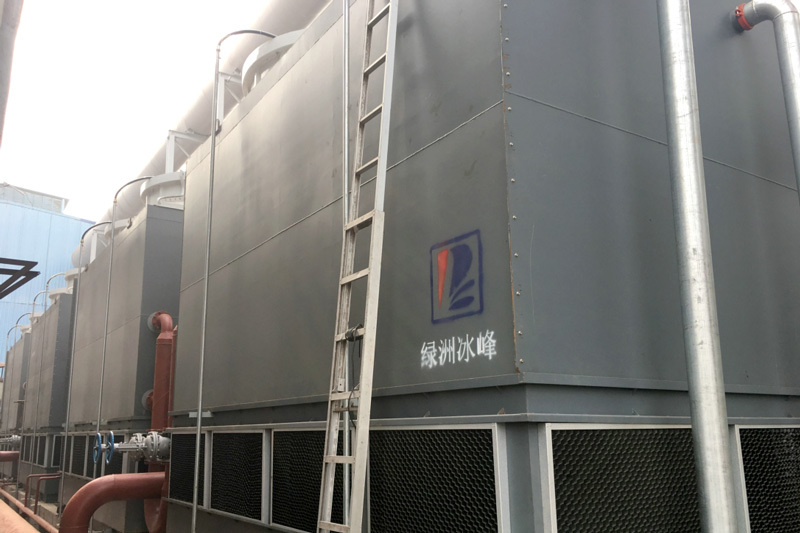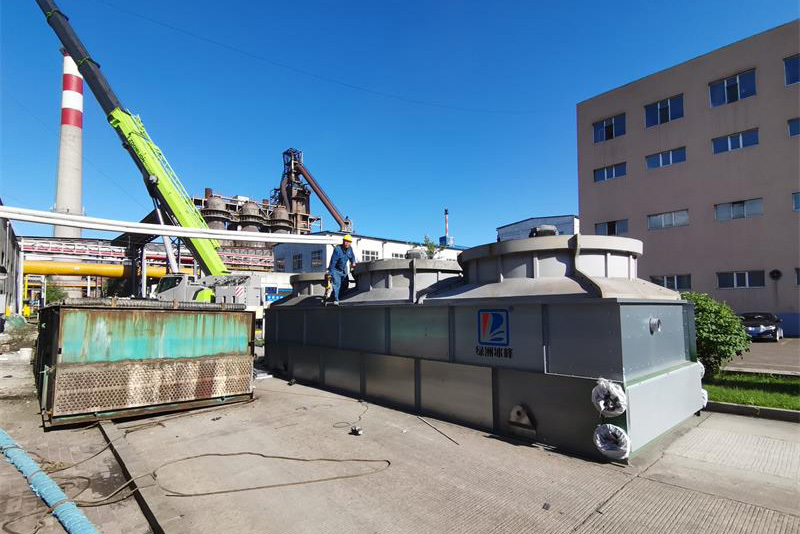




Evaporative Air Cooler
The evaporative air cooler utilizes the evaporation of sprayed water, which is carried away by air outside the tower to cool and transfer heat to the circulating medium within the heat exchange tubes. Notably, the circulating medium remains completely isolated from the external environment. Since the sprayed water vaporizes, a significant amount of water vapor mixes with the air, increasing humidity levels. To manage this, powerful ventilation equipment—commonly known as fans—is used to extract the saturated, highly humid, and high-enthalpy air from the tower. At first glance, it appears that the process involves cooling the air while simultaneously benefiting from the evaporation of the sprayed water. This dual mechanism is why it’s referred to as an "evaporative air cooler," though it’s also occasionally called an "evaporative cooler."
Key words:
Evaporative Air Cooler
Classification:

Hotline:
Evaporative Air Cooler
Overview
The evaporative air cooler utilizes the evaporation of sprayed water, which is carried away from the tower by air to cool and transfer heat to the circulating medium inside the heat exchange tubes. Notably, the circulating medium remains completely isolated from the external environment.
Since the spray water vaporizes, a large amount of water vapor mixes with the air, increasing humidity. This necessitates the use of powerful ventilation equipment—specifically, fans—to draw the saturated, high-humidity, high-enthalpy air out of the tower. On the surface, this process appears as air cooling combined with the evaporation of the spray water. Hence, it is commonly referred to as an evaporative air cooler, or sometimes simply called an evaporative cooler.
How it works
► Latent heat of vaporization: Similar to closed cooling towers, it relies on the evaporation of spray water outside the heat exchange tubes, absorbing the latent heat of vaporization and carrying away the thermal energy from the industrial circulating water flowing inside the sealed heat exchange tubes.
► Plate heat exchange: Spray water and air are completely isolated from the circulating medium, with no direct contact—only heat transfer occurs, ensuring no physical contact between the two.
Main Advantages
► No Evaporation: It only cools—no evaporation occurs, resulting in zero consumption. The circulating medium is completely isolated from outside air, ensuring no direct contact whatsoever. This prevents both evaporation and the entry of impurities, thereby maintaining the stability of the internal medium's composition.
► No scaling: Since there is no evaporation, the concentrations of scale-forming ions such as calcium, magnesium, and sulfate in the medium remain unchanged, preventing scale buildup altogether.
► Easy maintenance: All coils are fully visible, making maintenance convenient and inspections straightforward.
► The equipment features air intake from all four sides, resulting in low airflow resistance and reduced fan power consumption.
Application Scenarios
Commonly used in heavy industries such as iron and steel metallurgy, casting and smelting, petrochemicals, chemical light textiles, and machinery and power, it resists scaling, minimizes evaporation, and is often employed for cooling applications like desalinated water and purified water—cooling occurs within closed heat-exchange tubes that are completely isolated from the external atmosphere.
► Steel metallurgy: blast furnaces, continuous casting and rolling, crystallizers, air compressors, and more;
► Large-scale casting: melting furnaces, frequency converters, quenching fluids, and more;
► Oil refining: Reactors, refining furnaces, heat exchangers, and more;
► Chemical Industry & Light Textiles: Reactors, etc.;
► Air conditioning cooling: compressor, etc.;
Brand Advantages
Focused for 21 years—because of our focus, we’ve become experts, with extensive experience and unwavering quality.
21 patents, backed by patent support, delivering reliable technology, excellent performance, and stable operation.
Covering 40 mu, with strong financial backing and a solid support system, we offer long-term partnerships and worry-free after-sales service.
Case
Due to their use in industries such as iron and steel metallurgy, chemical processing, light textiles, and petroleum refining—where flows typically exceed 500 m³/h—their external dimensions are generally quite large. All of these units are custom-made products, designed specifically according to transportation constraints, site conditions, and production process parameters; thus, no uniform standards exist.

Add Sales Engineer Enterprise WeChat: Get Technical Copywriting for Free
Related Products
Leave us a message


